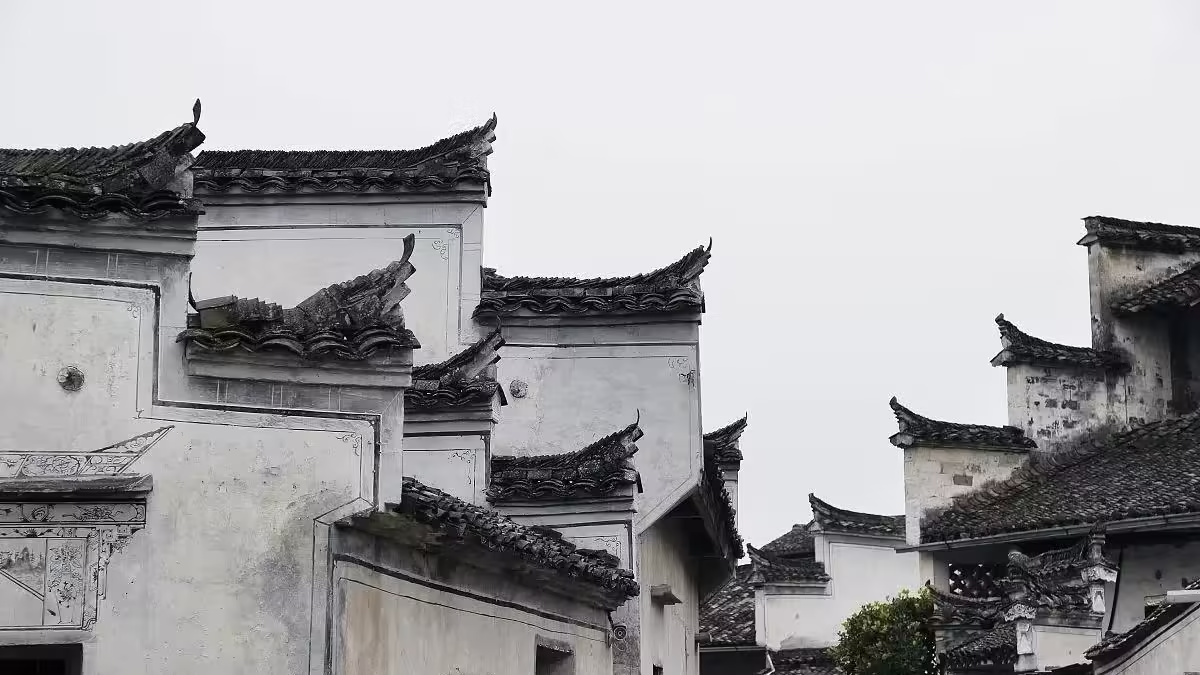Huizhou residences, unique to the Huizhou region of southern Anhui Province, are a quintessential example of traditional Chinese architecture. Known for their distinctive style, they are a perfect fusion of practicality and artistic beauty, representing one of the most important schools of traditional Chinese residential architecture. These homes, often referred to as “Hui-style residences,” have become symbolic of the region’s cultural heritage.
Harmonizing with Nature
Huizhou, being a mountainous region, has long influenced the way its residents build their homes. The people of Huizhou have historically used the natural terrain to their advantage, selecting village locations based on the unique “high and low” landscape features. Additionally, the design and layout of Huizhou villages often incorporate principles of feng shui, the traditional Chinese philosophy that emphasizes harmony between human life and the natural world. Villages like Chengkan, Longchuan, and Hongcun are examples of this, where the placement of homes, water bodies, and paths align with feng shui principles, reflecting the locals’ respect for nature and their deep connection to traditional Chinese philosophy.
The Iconic Horse-Head Wall
One of the most distinctive features of Huizhou residences is the use of the “horse-head wall” (also known as a fire wall or wind wall). These high, stepped walls, often in contrasting black and white, create a striking visual effect that has become synonymous with Huizhou architecture. The primary purpose of these walls is practical—to prevent the spread of fire in the densely packed villages where extended families live in close proximity. The horse-head wall, extending above the roofline, acts as a barrier in case of fire, ensuring that flames do not easily leap from house to house. Over time, these walls became an iconic architectural element of Huizhou homes, contributing to the area’s unique aesthetic.
Architectural Features and Symbolism
Huizhou residences are typically two-story brick-and-wood structures, designed with functionality and beauty in mind. One common feature is the deep-set entrance, often adorned with intricate stone carvings of landscapes, people, and animals. These decorative carvings not only add to the aesthetic appeal but also showcase the craftsmanship of Huizhou artisans. The main entrance is topped by a grand eave with elegantly upturned corners, adding a touch of grace and grandeur to the otherwise modest homes.
One of the defining characteristics of Huizhou homes is the use of open courtyards or “sky wells” (known as tianjing). Each house has multiple courtyards, serving as natural ventilation and light wells that brighten the otherwise enclosed spaces. The sloped roofs of the houses channel rainwater into these courtyards, symbolizing “water gathering at the heart” or “four waters return to the hall.” This design is not only practical in managing water flow but also symbolizes wealth accumulation, as the saying goes, “wealth does not flow away.” The upper floors of these homes, used for daily living, are spacious, with large halls, bedrooms, and side chambers designed to maximize comfort in the humid, mountainous climate of the region.
A Harmonious Blend of Functionality and Beauty
Huizhou residences are an excellent example of architecture that seamlessly adapts to the natural environment while providing a visually appealing aesthetic. Their black-and-white design, with intricately carved stonework and practical features like the horse-head walls and courtyards, makes them a unique part of China’s architectural heritage. These homes are not just places to live but also expressions of cultural values, representing harmony between humans and nature, as well as the balance of practicality and beauty.
The elegant simplicity of Huizhou residences, combined with their rich cultural history and artistic details, makes them a lasting symbol of Huizhou’s architectural legacy. Today, they stand as a vibrant reminder of a way of life deeply connected to both the land and traditional Chinese culture, forming an integral part of Huizhou’s cultural landscape.

